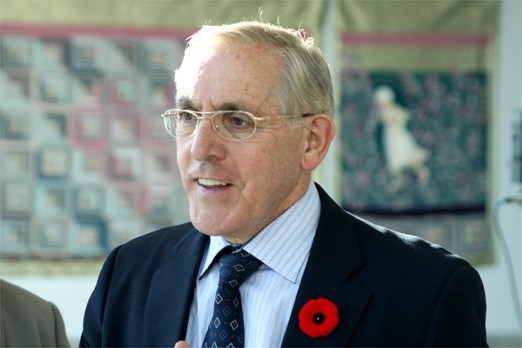Ontario is breaking new ground with the development of a 10-year plan to modernize and expand public infrastructure in the province and Infrastructure Minister Bob Chiarelli stopped in Thunder Bay Monday to hear from community leaders on what they see as priorities.
Municipal, First Nations and other private and public sector leaders made brief presentations to the minister and local MPPs Michael Gravelle (Lib., Thunder Bay-Superior North) and Bill Mauro (Lib., Thunder Bay-Atikokan ) about what they deem necessary infrastructure projects.
"We’re here to consult, to hear what the people of Thunder Bay have to say," said Chiarelli, in the midst of a tour to cities across the province.
"It’s the stakeholders that are where it’s at. It’s the school boards that need to tell us how to best deliver services on the ground. It ‘s the CEOs of hospitals, it’s the health research institutes that need to tell us where it’s at and I spoke to some of these leaders here in Thunder Bay and they’re really keen. They’re leaders. They’re very much on the cutting edge of what’s happening and we need to follow that lead."
The 10-year plan is to not only identify the cost to build, but also to do it smartly, taking into account innovation and demographics, the minister added.
Atikokan mayor Dennis Brown said the consultation was a great opportunity for the town to express its views.
For Atikokan – like all municipalities – it’s a challenge to keep up with infrastructure from roads and water lines to arenas and public libraries.
"We feel there needs to be a program where there’s permanent funding that the communities can apply to and we feel this funding should be made available in a non-competitive (format)," Brown said. "Right now we’re in competition with other municipalities across Ontario. We feel that needs to change so the communities have more of a sense of certainty that there’s going to be some funding available."
He also said municipalities should have a greater say in how they use infrastructure funds.
"Whether we want to put it into roads, to build a new arena or on a sewage treatment plant, that should be more of a decision by local mayor and council and staff," he said. "They know the needs of the community best."
On behalf of all of Ontario’s public libraries, Thunder Bay Public Library CEO and chief librarian Gina La Force addressed Chiarelli Monday about the growing need to update the province’s aging libraries.
"There are more than 1,090 library branches across Ontario, many of them old and very much needing renewal and repair and only 3.2 per cent receive funding under the federal and provincial infrastructure funding grants," she said, adding she’d like to see the province ensure 21st century libraries have 21st century buildings.
In Thunder Bay, with the exception of the still-under-construction Mary J.L. Black Library, the TBPL’s buildings are in need of repair, La Force said.
"While the city has been extremely supportive, they city can’t fund all those costs on its own so we’re looking for a dedicated infrastructure funding grant that would be administered by the municipalities but for public libraries," she said.
Like the Thunder Bay Public Library, Lakehead Public Schools is also hoping to secure funds to maintain their buildings.
"Capital planning is extremely important for the board," said Karen Wilson, vice-chair of the board. "It’s all based on what do (the buildings) need to have to support our students in the success of their future. It’s not only the structure of the building itself, but it’s the technology in the building, all to support students."
Along with community leaders throughout Ontario, the province is also consulting with infrastructure experts and economists as well as other ministries. Chiarelli said the plan should be released in May or June 2011.
Sign in or register
- Messages
- Post a Listing
- Your Listings
- Your Profile
- Your Subscriptions
- Your Likes
- Your Business
- Support Local News
- Payment History
Registered Users
Already have an account?
New Users
Create a free account.
